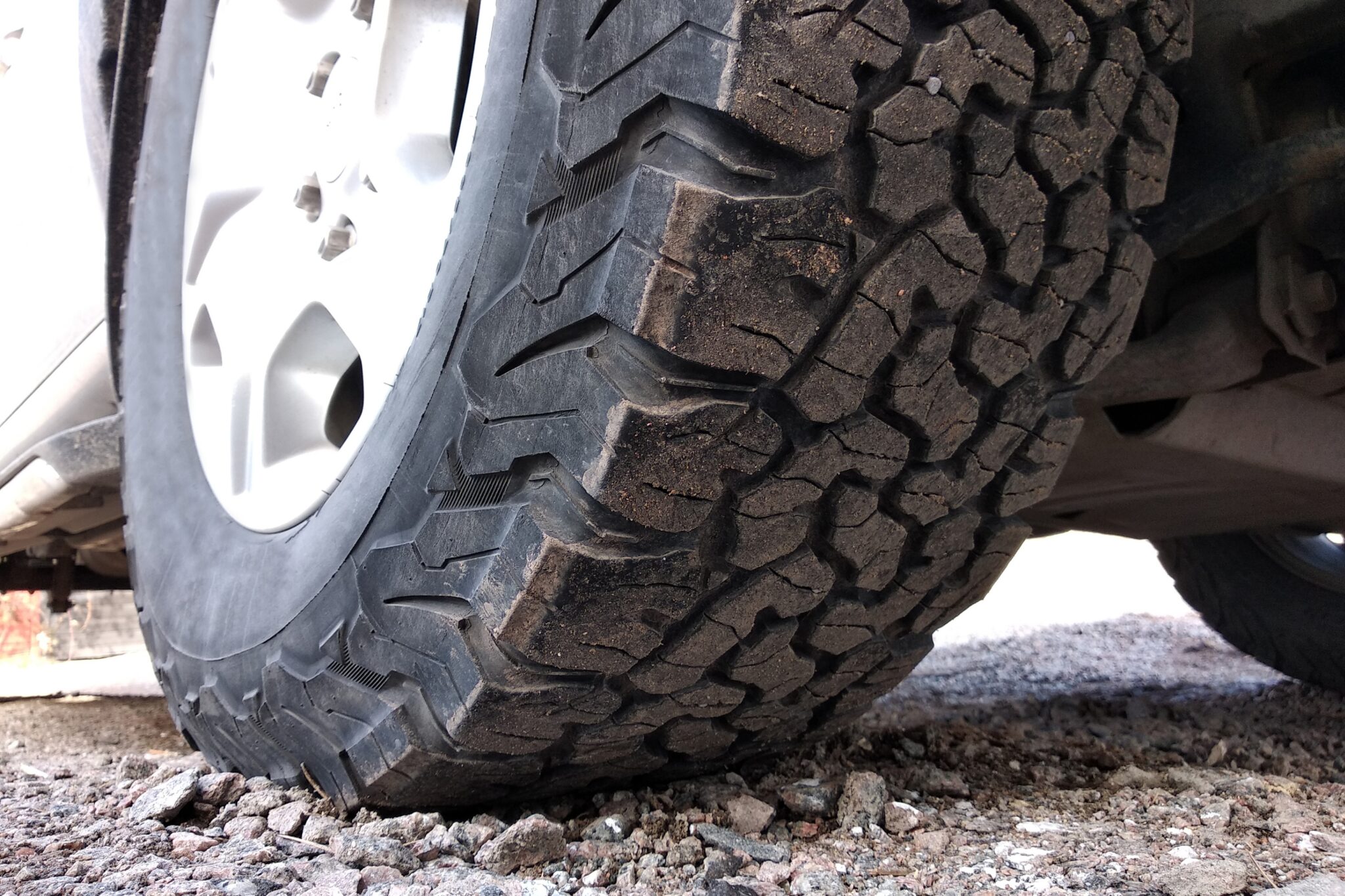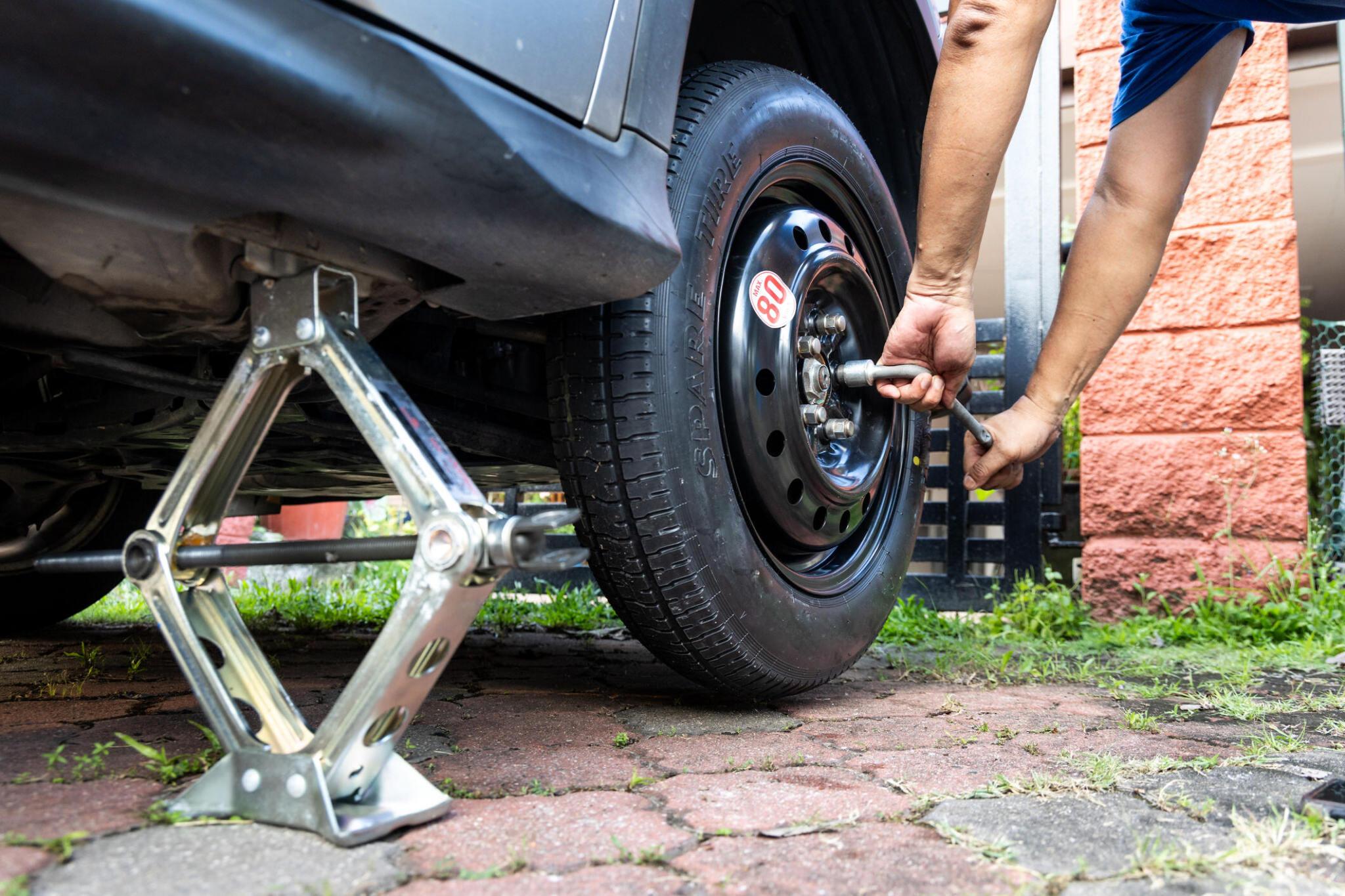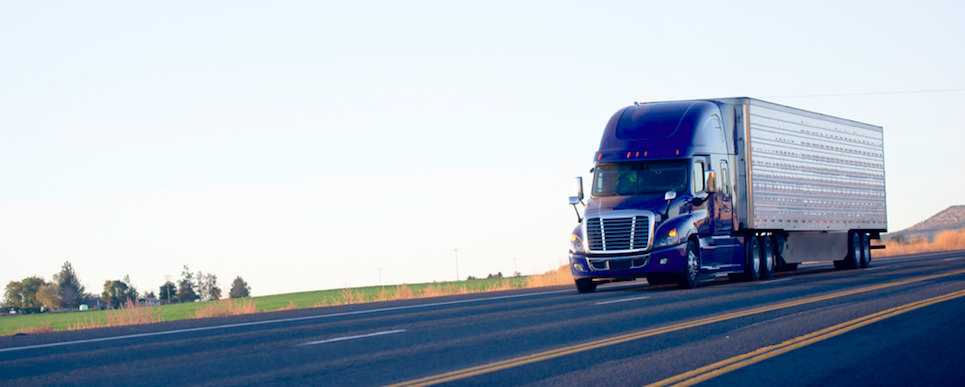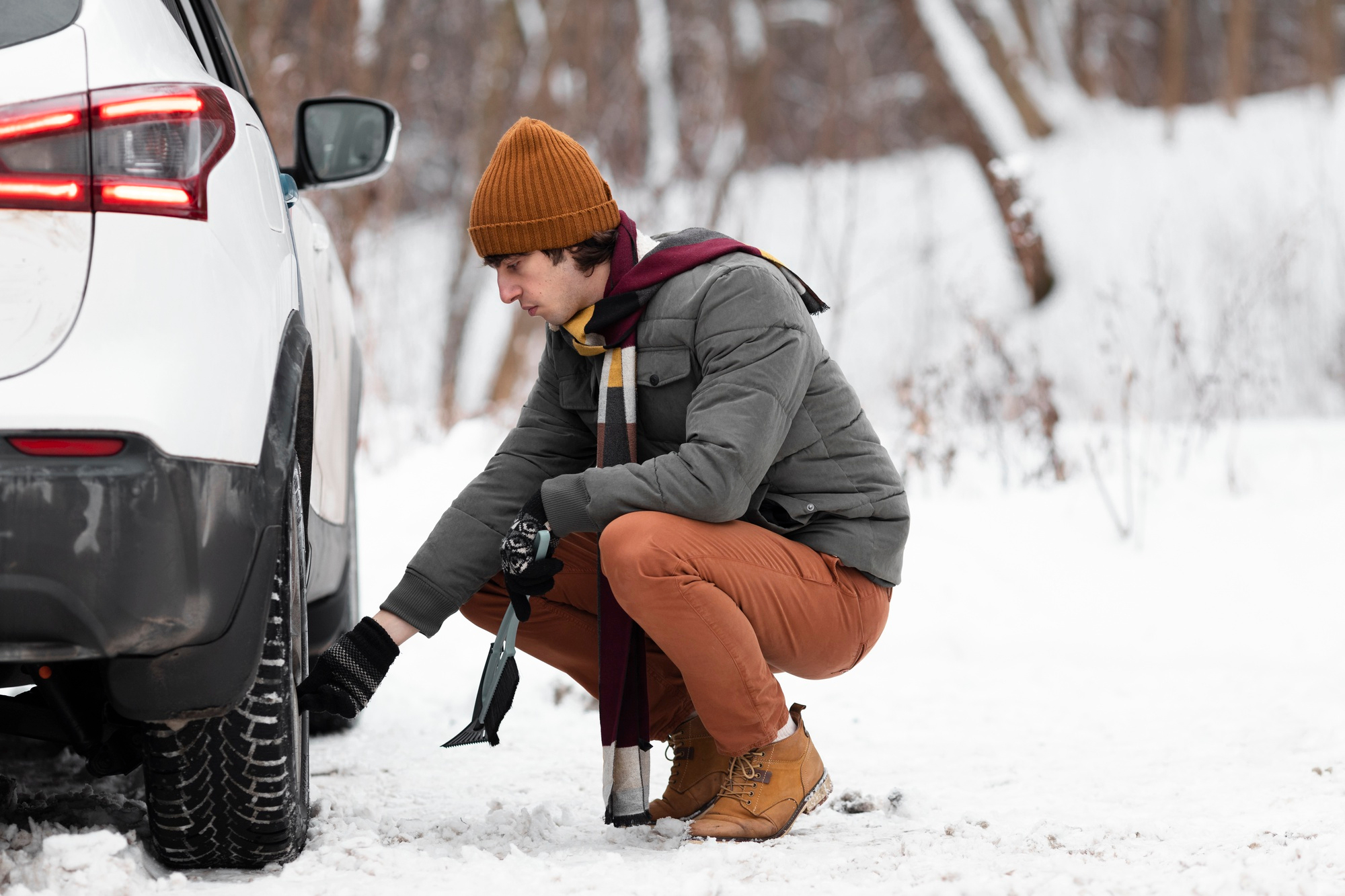Last Updated on April 21, 2024
Learn How to Tow ATVs and UTVs with Trailers Safely
Temperatures are climbing, and summer is nearly here. That means it’s time to enjoy the outdoors. What better way than having fun in nature with an all-terrain or utility task vehicle? If you are hauling a UTV on a trailer for the first time so you can take a casual drive through the wilderness or need to brush up on how to move a quad for fun in the sun, we have tips for making the most of your summer outing.
Are you ready to dive into the exhilarating world of all-terrain vehicles (ATVs) and utility task vehicles (UTVs)? Whether you’re a seasoned off-road enthusiast or a beginner looking to explore the great outdoors, towing your ATVs and UTVs with the right trailer is essential. This comprehensive guide takes you through the ins and outs of safely towing your off-road vehicles, from selecting the perfect trailer to confidently hitting the trails.
The Trailer( Essential Considerations for Safe ATV and UTV Towing)
Before you can go off-roading, you must haul your ATV or UTV to the location, which means dealing with a trailer. You’ll need to ensure your vehicle can tow the weight, meaning you’ll likely need an SUV or truck. You’ll want to choose the right trailer (preferably one made for ATVs). These have lower decks and often come with a foldaway ramp.
Others have siding that folds down to become a ramp. If you are loading into the back of a truck (which we don’t recommend, as tipping over backward is too easy), you will need a ramp rated at least 1,000 lbs.
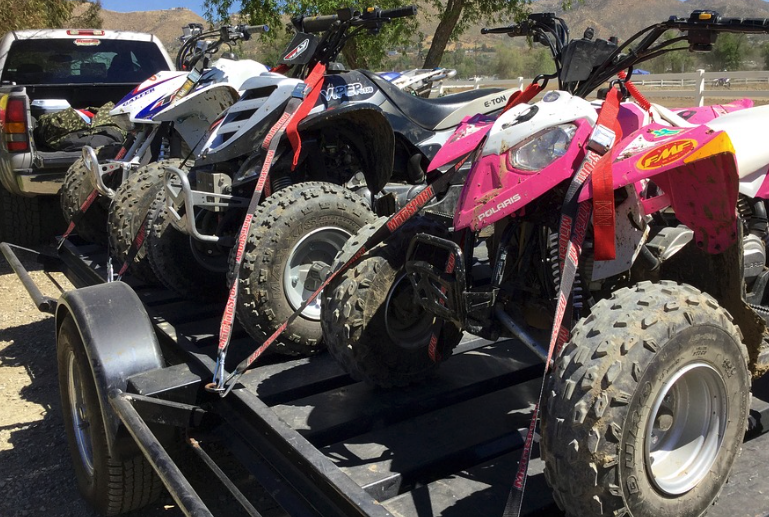
There are two major areas where you should not skimp, or your ATV and trailer could suffer significant damage—first, the tires, where the trailer meets the road. We recommend Carlisle Radial Trail RH tires, perfect for hauling ATVs faster than the average trailer tire. You could face a blowout with the wrong tire, damaging the trailer, the ATV, and possibly your main vehicle.
Check the tire pressure, as under- or over-inflated tires will shred or wear out quickly. Straps are the second piece of equipment you want to spend on quality. Use a minimum 2,000-rated strap with adjustable ratchets to keep your ATV snug and secure. It should move with the trailer and have no give-or-play.
Choosing the Right Trailer
The first step in your off-road adventure is selecting the right trailer for your ATVs and UTVs. Here are some key factors to consider:
1. Trailer Type
Various trailers are available, including open, enclosed, and flatbed trailers. The choice depends on your specific needs and preferences. Open trailers are popular for their ease of use and accessibility, while enclosed trailers provide additional protection from the elements.
2. Trailer Size
Ensure that your chosen trailer can comfortably accommodate your ATVs and UTVs. Measure the dimensions of your vehicles to determine the appropriate trailer size. It’s crucial to have enough space to secure your equipment properly.
3. Weight Capacity
Check the trailer’s weight capacity to ensure it can safely handle the combined weight of your ATVs or UTVs. Exceeding the trailer’s weight limit can lead to safety hazards and damage to your equipment.

Towing Safety Tips
Safety should always be your top priority when towing off-road vehicles. Follow these essential safety tips:
- Trailers Maintenance: Regularly inspect your trailer for any signs of wear and tear. This includes checking the frame, axle, and suspension components for rust, cracks, or damage. Ensure that the tires have sufficient tread and proper inflation. Check the brakes to ensure they are functioning correctly, and inspect the lights to confirm they are working as intended. Examine the hitch and coupler for any signs of wear or damage. Proper trailer maintenance is essential for ensuring safe and trouble-free towing.
- Secure Your Load: When securing your ATVs and UTVs to the trailer, use high-quality tie-down straps and wheel chocks. Position the tie-down straps over the vehicles’ tires and handlebars or suitable attachment points. Tighten the straps securely to prevent movement during transit. Additionally, use wheel chocks in front of and behind the wheels to prevent any rolling or shifting of the load. Before hitting the road, double-check that all tie-downs and chocks are tight and secure.
- Weight Distribution: Properly distributing the weight of your vehicles on the trailer is critical for maintaining balance and stability. Consult your trailer’s manual for guidance on the recommended weight distribution. Typically, heavier items should be placed toward the front of the trailer, with a slight forward bias. Avoid overloading the rear of the trailer, as this can lead to swaying and loss of control during towing. A well-balanced load contributes to safer towing.
- Driving Speed: Practice safe driving habits and adhere to speed limits when towing. Keep in mind that towing a trailer increases your vehicle’s overall length and weight, which affects stopping distances and handling. Maintain a safe following distance to allow for extended braking time, especially when driving at higher speeds. Avoid sudden maneuvers and sharp turns, as these can lead to instability. Drive cautiously and attentively to ensure the safety of yourself and other road users.
By following these expanded safety guidelines, you’ll help ensure a secure and risk-free towing experience for your off-road vehicles.
Hitting the Trails
Once you’ve selected the right trailers and mastered towing safety, it’s time to explore the thrilling world of off-road trails, research local trails, join off-road communities, and take the necessary safety precautions before embarking on your adventure.
Loading and Unloading the ATV
First, wear a helmet when loading or unloading an ATV or UTV. Start in the lowest gear, and when loading, engage a four-wheel drive, if available. Don’t open the throttle too much; the wheels could spin, or you will gain too much momentum. Go slow and steady both ways.
Follow the 60/40 weight rule, where 60 percent of the weight on the trailer is in the front, towards your vehicle.
Straps should be attached or wrapped around a sturdy part of the ATV or UTV. Do not attach hooks to the TATV’s suspension or axles; these will bend under ratcheting pressure. Instead, check the ATV’s manual for where you should attach straps.
Maximize Your Off-Road Adventure: Finding the Perfect ATV and UTV Trails
Now that the ATV is loaded up, it’s time to find a spot to go off-roading. Dennis Kirk compiled a fantastic list of websites for each state that will lead you to a trail and details about which vehicles are allowed on each course or recreation area. Other details include when the system or site is open, the difficulty of the ride, and local lodging if you plan to extend your stay. For another resource, the US Forest Service maps all trails in the nation’s national forests.

Are you looking more for a bucket list of the all-time great ATV trails and parks? ATV Rider has you covered.
Is it your first time on a quad or UTV? Here are some basic riding techniques and safety tips to help your first ride smoothly and introduce you to this exciting hobby. Are you looking to go off-roading in your truck or SUV? Here’s some e? TooHere’s’s.
Each step — from getting your ATV or UTV onto a trailer to ensuring the campers are suitable to haul and finally finding a good trail or recreation area — is important to get the most out of your ride. Do each one properly; you’ll be out flying down nature trails quickly.
Ready to Roll? Get Your Trailers Tires!
Before starting your off-road journey, ensure your trailer tires are in excellent condition. Worn-out or damaged tires can compromise your safety and vehicle performance. At Tire Easy, we offer a wide range of trailer tires designed for various terrains and towing needs.
Ready to equip your trailers with the best tires for your off-road adventure? Explore our selection of high-quality trailer tires at Tire Easy and start your journey with confidence!
Proper preparation and safe towing practices are key to a successful off-road adventure. With the right trailers and trailer tires, you’ll be well on your way to conquering the trails and creating unforgettable off-road memories.
Conclusion
In conclusion, embarking on an adventure with your ATV or UTV and towing it safely using the right trailer can open up a world of thrilling off-road experiences. This beginner’s guide has provided essential insights into choosing the appropriate trailer, loading and securing your vehicle, and exploring exciting trails.
Remember to prioritize safety, follow local off-road regulations, and conduct thorough maintenance checks on your trailer and vehicles before each journey.
By following these tips and guidelines, you’re well on your way to enjoying the great outdoors with your ATVs and UTVs and making lasting memories on the trails.
FAQs
How do you tow a trailer with an ATV?
Towing a trailer with an ATV requires a compatible trailer and a suitable hitch or coupler on the ATV. Here’s a basic guide:
- ATV Hitch: Ensure your ATV has a designated hitch or receiver. Some ATVs come with factory-installed pitfalls, while others may require an aftermarket hitch.
- Trailer Selection: Choose a trailer specifically designed for ATVs. These trailers typically have a low deck height, sturdy construction, and tie-down points.
- Hitch Connection: Attach the trailer’s coupler to the ATV’s hitch ball or receiver. Ensure it’s securely fastened and locked in place.
- Load Distribution: Place your ATV on the trailer, ensuring it’s balanced and properly secured with straps or tie-downs. Distribute the weight evenly to prevent trailer sway.
- Safety Check: Before towing, check that all connections are secure, lights are functioning, and brakes (if equipped) are working correctly.
- Towing Speed: Drive safely and controlled, considering the trailer’s weight and terrain. Be cautious when turning and braking.
What kind of trailer do I need for an ATV?
For ATV transportation, an ATV trailer is the best choice. These trailers are designed to accommodate the size, weight, and dimensions of an ATV. They typically have features like low deck height, sturdy frames, ramps, and tie-down points, making loading and securing your ATV easier and safer.
What size trailer do I need for a side-by-side and ATV?
The trailer size you need depends on your side-by-side (UTV) and ATV dimensions. Measure the length and width of both vehicles and add a few extra inches for clearance. Ensure the trailer’s deck size is large enough to accommodate both vehicles side by side. Additionally, consider the trailer’s weight capacity to ensure it can safely carry the combined weight of your UTV and ATV.
What trailer to use with UTV?
For towing a UTV (side by side), you’ll want a trailer specifically designed for larger and heavier off-road vehicles. Look for a UTV trailer with a wider deck, reinforced frame, heavy-duty axles, and ample tie-down points. Some UTV trailers also have ramps or loading gates to facilitate easy loading and unloading. It’s crucial to choose a trailer that matches the size and weight of your UTV to ensure safe and secure transportation.




